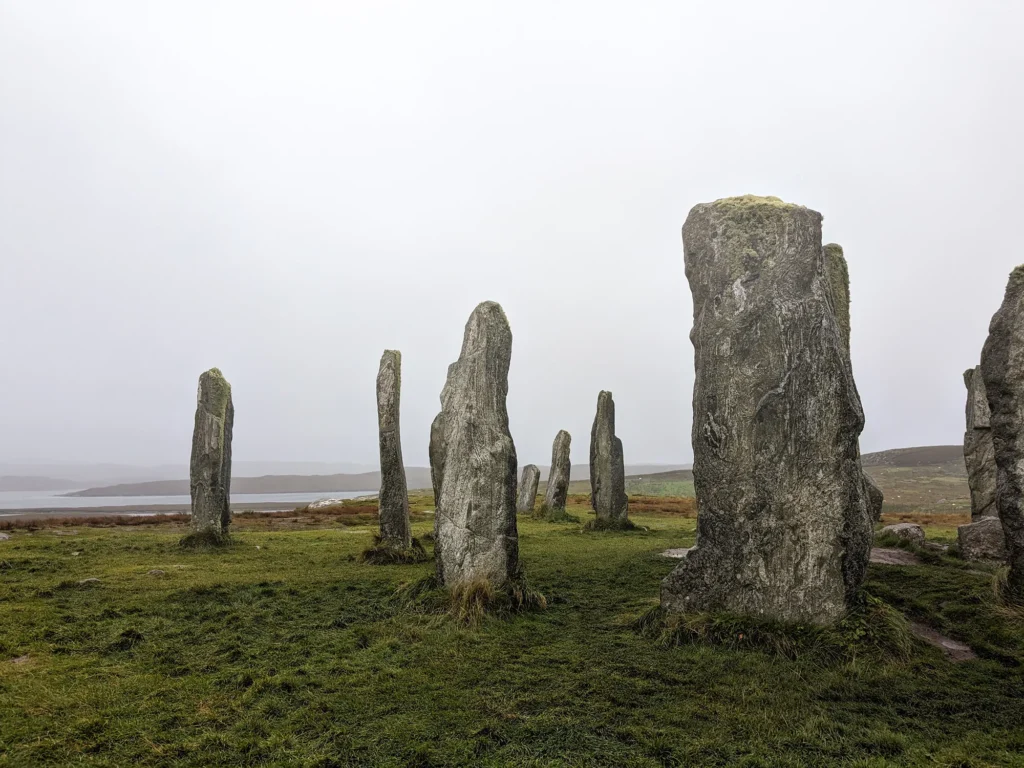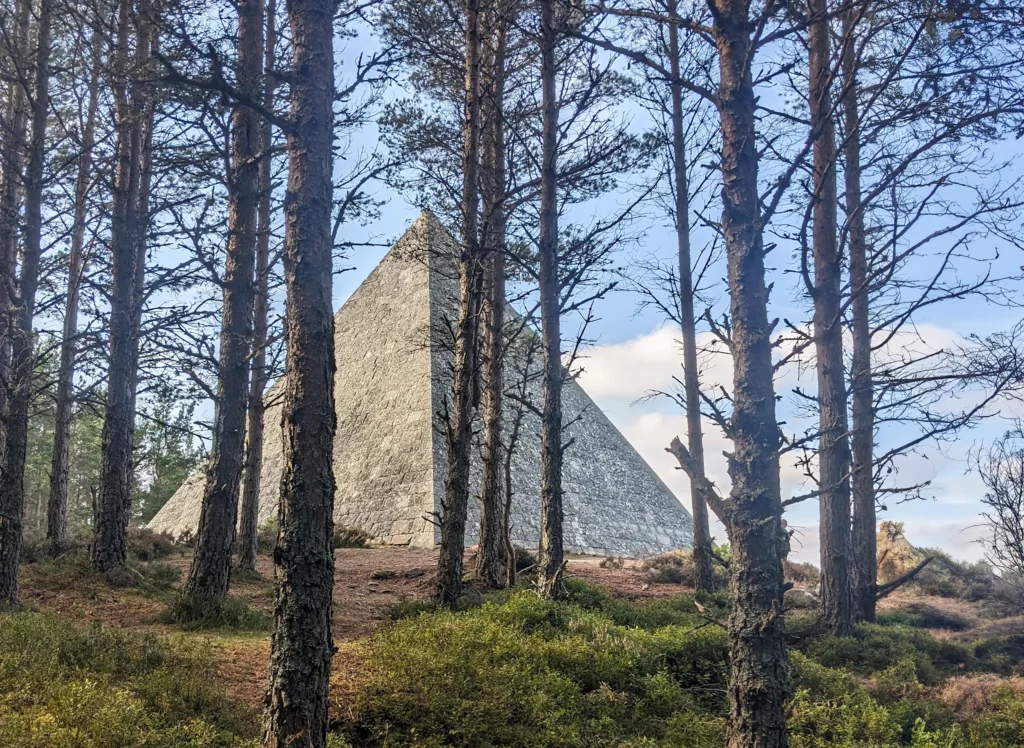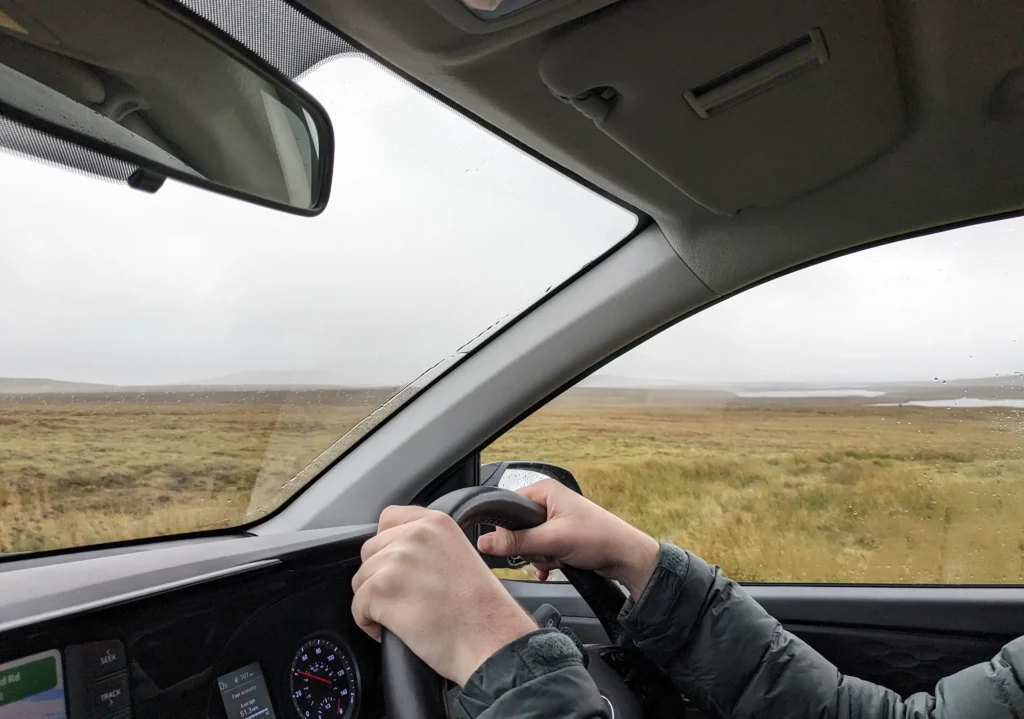Is it worth visiting Harris and Lewis in Scotland?
Yes!
The Isles of Harris and Lewis provide a unique experience that’s different from the rest of the country. While Scotland is often known for its towering mountains, rolling hills, and misty glens, the landscape here is flatter, with rocky terrain and stretches of peat bogs. You’ll also find stunning white sand beaches that you wouldn’t think to associate with Scotland. The best way I can describe the Isles is like a “lunar landscape”—similar to driving around Iceland’s Southern Peninsula.
Besides these breathtaking landscapes, Lewis and Harris are also home to ancient historical sites you won’t find anywhere else in Scotland.
What the Isle of Lewis and Harris is known for: Centuries of History
Calanais Standing Stones
Starting with the oldest historical site, the Calanais Standing Stones are one of the most significant attractions on the Isles. They were actually one of the reasons I was inspired to visit (yes, I’m an Outlander fan!). Dating back to around 5,000 years ago, these towering stones form a mysterious circle that many believe was erected as an astronomical observatory, though there are many theories surrounding their purpose.
Not only are these stones older than England’s more famous Stonehenge, but you can also walk among them. This is the best part—you can really see how impressive they are as they tower above you. Standing there, it’s easy to imagine the culture and rituals of the prehistoric people who once gathered on this ridge.
There is also a visitor centre with a cafe and exhibition on site. The exhibition itself was limited, with only a little information (which makes sense, as not much is known about the stones). When we visited, it cost £4 to enter, which we thought was overpriced. Most of the details can be found on the Calanais website, so I’d recommend skipping the exhibition to save your money.
Tips for visiting
- The site sits on an exposed hilltop, which means it gets extremely windy—so be sure to pack your wind jackets! When we visited, the weather was pretty rough, with heavy rain stinging our faces and strong winds trying to blow us off the ridge.
- Many people online mentioned that the site can get quite crowded, so we arrived around 9am and were among only a few visitors (though the weather probably helped keep some people away). As we were heading back to the car park, a tour bus was pulling in, so I’d recommend arriving as early as possible to make the most of the experience. It truly feels magical, and large crowds could take away from that. The site is open 24 hours a day, so visiting early is possible—I can imagine sunrise would be absolutely incredible to witness between the stones.
- While the main site is the most impressive, there are other stone circles nearby (known as Callanish II, Callanish III, and Callanish IV) as well as several more scattered across the Isles.
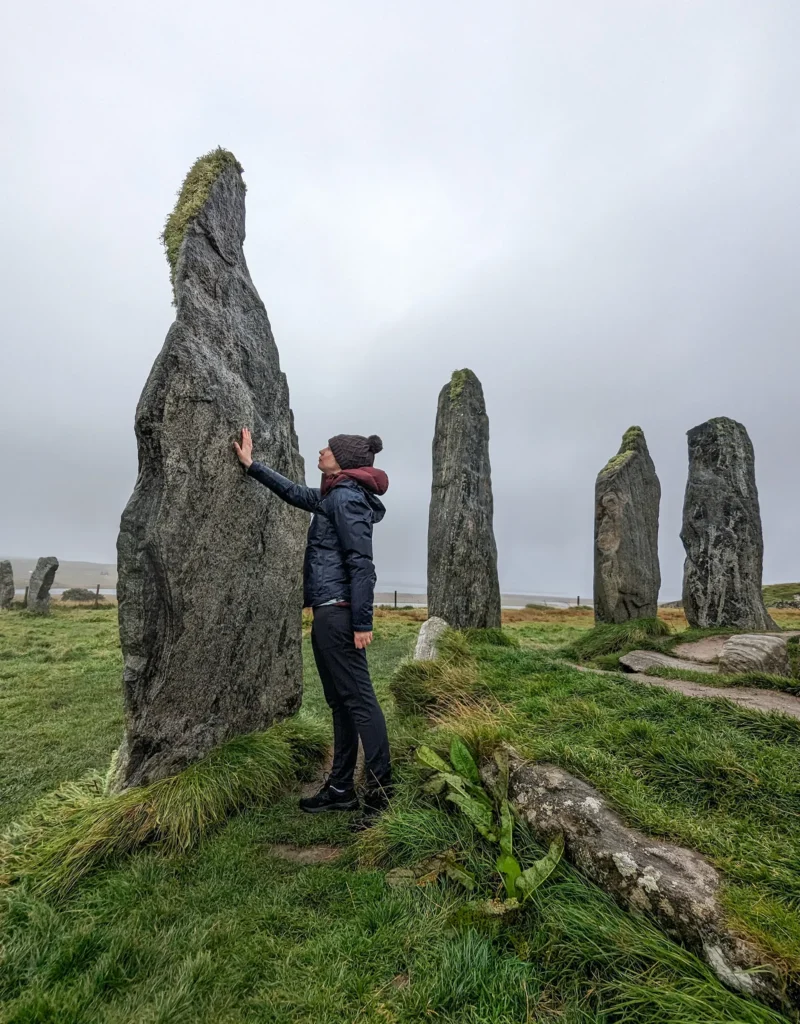
Bosta (Bostadh) Iron Age House
Bosta Iron Age House was an unexpected gem we discovered thanks to our amazing Airbnb host in Stornoway. Located on Bostadh Beach (which reminded us of the white sand beaches back home in Australia—minus the weather!), stone structures of a Norse settlement were uncovered in the sand dunes during a 1993 storm. These houses are believed to date back to the centuries following 500 AD.
After the archaeological exploration, the houses were covered back up with sand to preserve them, and a reconstruction of one of the houses was built and placed further down the beach. Even though there were no clear signs about how the original houses were roofed, the roof has been thatched like the traditional blackhouses found across the Isles.
You can enter the house by following the curved steps at the back, designed to keep out as much wind as possible. These lead you down to a wooden door that opens into a dark space below ground level (you’ll need to duck down). Inside, you’ll find a peat fire burning, casting a faint glow. Even after your eyes adjust to the dim light, it’s surprising to think that people lived with so little light.
Our guide, Paul, was amazing! He shared fascinating details about the people who once lived here and happily answered all our questions about the house and the Isles in general.
Tips for visiting
- You can visit the exterior of the house year-round, but unfortunately, the interior is only open to visitors during the summer months, from May to September, between midday and 4 p.m. I’d recommend checking the opening times before you go, as it’s a bit of a drive from Stornaway along a single-track road.
- At the time of writing the admission is £4 for adults and £1 for children.
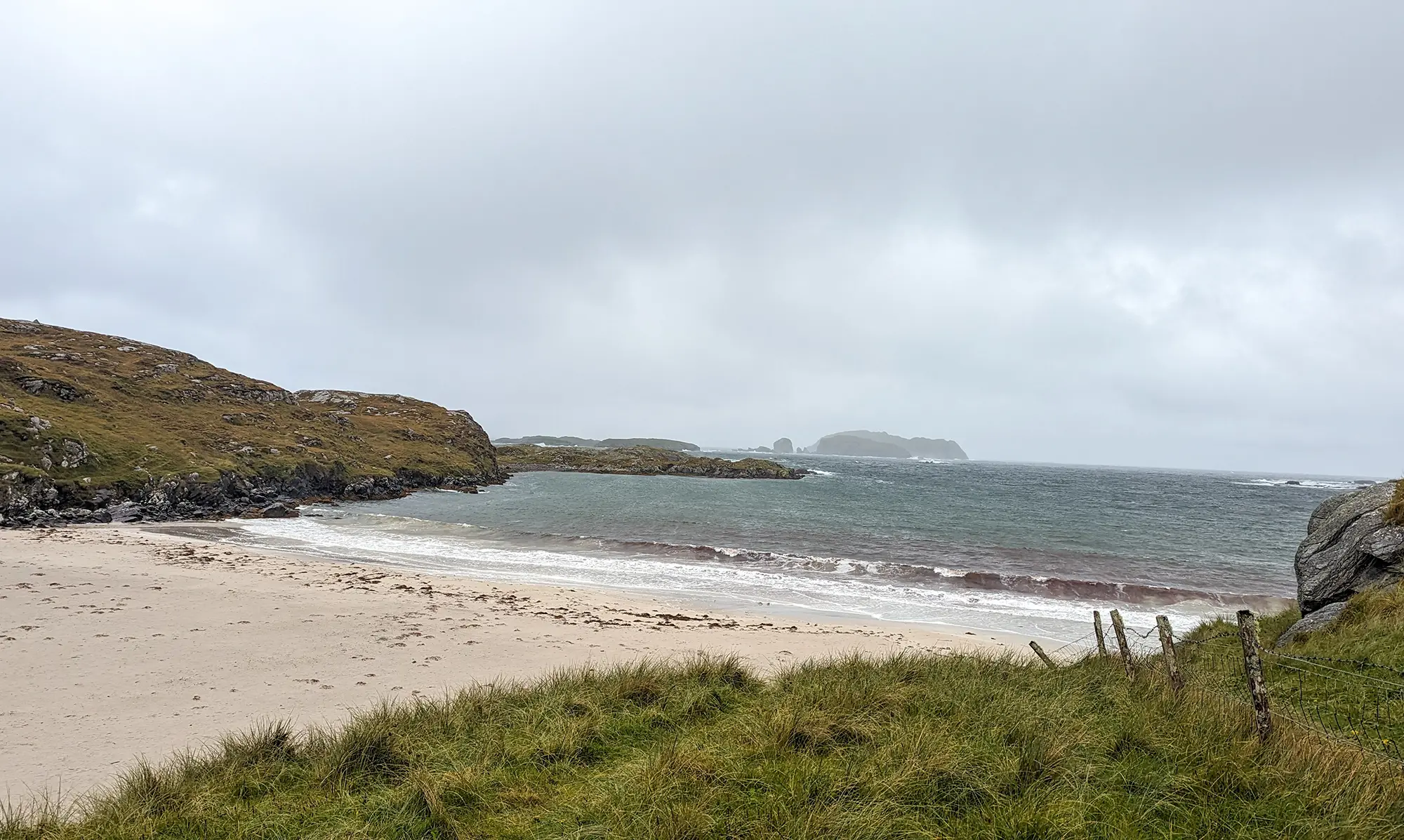
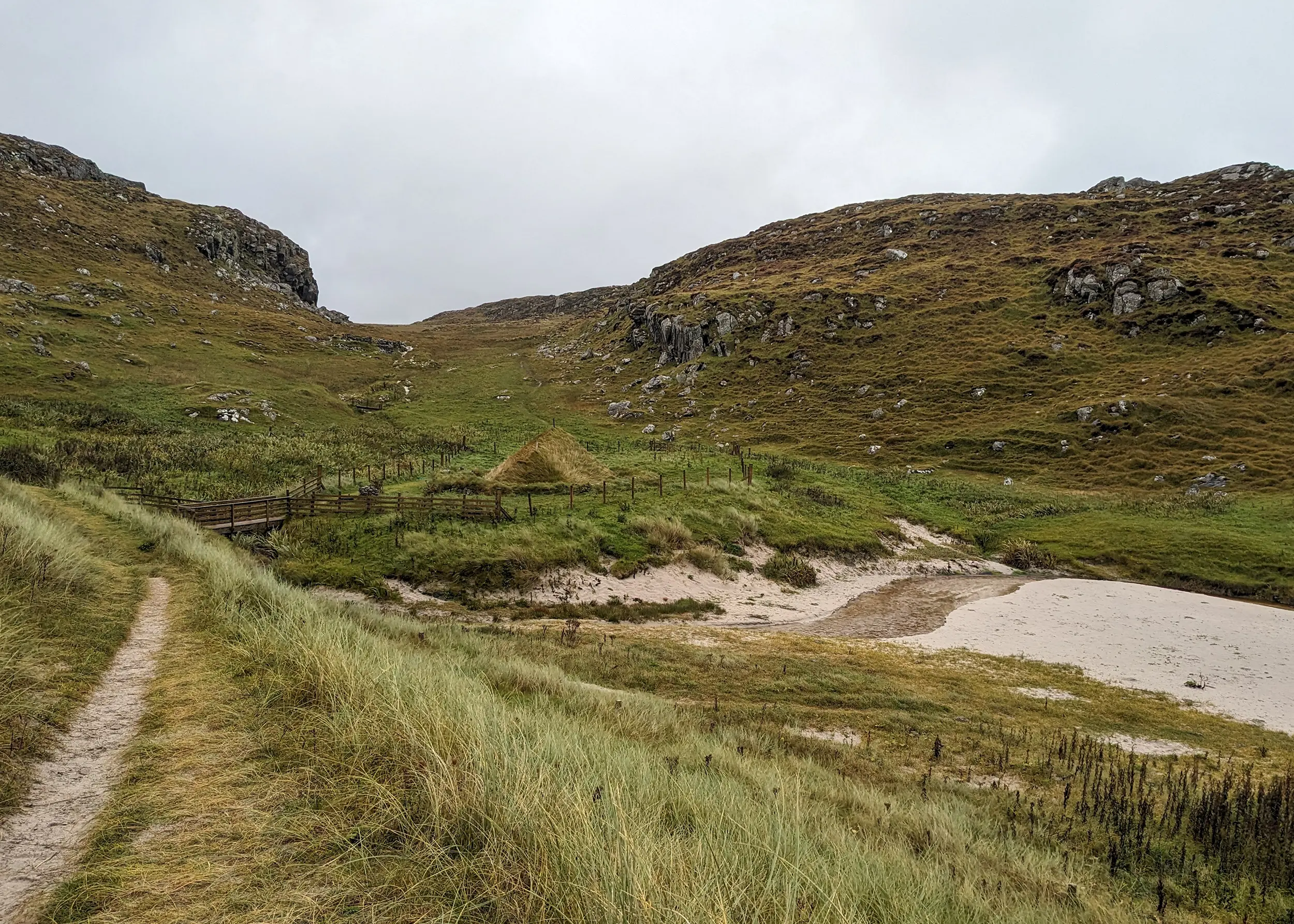
Gearrannan Blackhouse Village
Moving to more recent history is the Gearrannan Blackhouse Village. These restored traditional blackhouses dating back to the late 1800s, made of stone and thatched roofs, offer a glimpse into the lives of crofting families who lived in the village until 1974.
Most of the houses are now used as holiday homes, but some are open to the public. One of these is a one-bedroom house that a family shared with their livestock. This home has been arranged to represent how their lives used to be, complete with everyday items, tools, and a peat fire that creates a cozy, smoky atmosphere. In the stable area, we also got to watch a demonstration of how the famous Harris Tweed is woven.
Another of the houses includes a video demonstration of how peat is cut and dried. We found this really interesting as we had seen so many peat stacks in the fields while exploring the isles.
There’s also a café and gift shop on-site so we wrapped up our visit with a delicious block of Scottish tablet to try.
Tips for visiting
- Like many other businesses on the Isle, the village is closed on Sundays. You can still stop by and admire the houses from the outside, but you won’t be able to go inside.
- At the time of writing the admission is £4.60 for adults.
Do you need a car to visit the Isle of Lewis and Harris?
Yes, having a car is the best way to explore Lewis and Harris. Many of the viewpoints and historical sites are spread out and not easily reached by public transport. With a car, you can explore the places you’re most interested in, taking detours or stopping whenever something catches your eye.
If renting a car isn’t possible, there are plenty of tours that cover the main sights. Some, like Rabbie’s, even start on the mainland, so you don’t have to worry about arranging ferry rides or flights.
